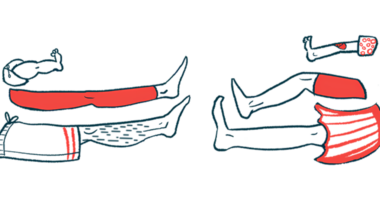CDNF, Potential DMT for Parkinson’s, May Work as Nasal Spray

A potential Parkinson’s therapy based on a protein with an ability to protect neurons — called recombinant (lab-made) human cerebral dopamine neurotrophic factor (rhCDNF) — has been transformed into tiny nanoparticles that may allow for its use as a nasal spray, Herantis Pharma, its developer, announced.
Nanoforming, the process of engineering rhCDNF (also known as CDNF) into nanoparticles, those thousands of times thinner than a human hair, was conducted by Nanoform using its nanoparticle technology.
Under a February partnership agreement, Nanoform conducted proof-of-concept studies to determine if its nanoforming process could be applied to rhCDNF, making it suitable for intranasal spray delivery. Currently the treatment, which aims to stop Parkinson’s progression, needs to be administered directly into the brain using an implanted delivery system suited for Parkinson’s patients.
Results showed that rhCDNF was successfully engineered into nanoparticles. Most importantly, the treatment retained its protein structure, essential for it work as intended. Further tests supported that rhCDNF, as nanoparticles, maintained its effectiveness and neuroprotective effects.
“This was a key milestone to achieve as part of our broader intranasal administration project for rhCDNF, one of only a few clinical stage assets focused on disease modification of Parkinson’s disease,” said Craig Cook, CEO of Herantis Pharma.
“The ability to nanoform the rhCDNF molecule improves the chances of success for intranasal administration and creates additional possibilities to impact the lives of patients. We very much look forward to progressing the work with Nanoform,” Cook added.
Another study will now further refine the size and shape of the rhCDNF nanoparticles, and evaluate their distribution when delivered as minimally invasive intranasal spray.
“We look forward to now moving into … further nanoforming activities as rhCDNF continues its development,” said Christian Jones, chief commercial officer of Nanoform.
Parkinson’s is characterized by the loss of nerve cells that make the neurotransmitter dopamine, a chemical messenger that allows nerve cells to communicate and, among other functions, helps regulate movement.
CDNF, found naturally in blood and the cerebrospinal fluid (the fluid bathing the brain and spinal cord), is a neurotrophic factor, or a protein that helps nerve cells survive. In studies involving animal models of Parkinson’s, CDNF protected and regenerated nerve cells.
Preclinical work also showed CDNF could repair nerve cells and induce dopamine production. Its use also lessened alpha-synuclein accumulation — another Parkinson’s hallmark — and nerve cell inflammation.
A Phase 1/2 clinical trial (NCT03295786) tested CDNF’s safety and tolerability in 17 patients with advanced Parkinson’s disease; each had five to 15 years of evident motor symptoms.
In a first part, patients at sites in Finland and Sweden were randomly assigned to monthly infusions of a medium or high dose of CDNF, or to a placebo for six months. This was followed by a six-month extension period, in which all were treated with CDNF each month, including those previously on placebo.
CDNF was administered directly into patients’ brains through a delivery system implanted by a neurosurgeon.
Top-line data showed that CDNF was safe and well-tolerated in both the trial’s first randomized and second open-label phase. No dose limiting toxicities were evident.
Treatment at the one-year mark also eased motor symptoms and showed a potential to slow disease progression in some patients. Positron-emission tomography (PET) imaging scans of brain areas where CDNF was administered registered higher levels of dopamine transporter, a protein that regulates the flow of dopamine between neurons.
Alternative delivery methods are needed because via a direct-to-brain implant, CDNF’s administration is not suitable for people with early stage Parkinson’s, “the optimal patient population for a neurorestorative treatment aiming to rejuvenate the remaining dopamine neurons,” Herantis reported on a webpage.







